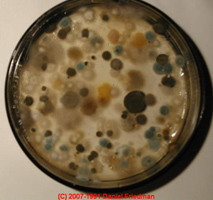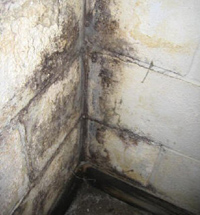Mold Issues

Molds are microscopic organisms found everywhere in the environment, both indoors and outdoors. There are more than 100,000 species of mold. Mold can grow anywhere there is water damage, high humidity, or dampness, such as in bathrooms and basements. Mold spores float continually in the air around us. When they land on a moist surface indoors, they may begin to grow and digest the surface. Mold can grow on just about any substance, as long as there is moisture and oxygen available. Mold growth occurs when excessive moisture accumulates in buildings or on building materials including carpet, ceiling tiles, insulation, paper, wallboard, wood, surfaces behind wallpaper, or in heating, ventilation, and air conditioning (HVAC) systems.

When moldy material becomes damaged or disturbed, mold spores can be released into the air. We are all exposed to mold spores in the air we breathe on a daily basis. When present in large quantities, molds have the potential to cause adverse health effects. However, the most common types of mold are generally not hazardous to healthy individuals. People who have asthma, hayfever, or other allergies or have weakened immune systems are more likely to react to mold at some point. A very small percentage of the population can develop more serious effects, but these effects are uncommon and much more rare.

It is impossible to eliminate all molds and mold spores from an indoor environment. However, moisture control, such as through preventative maintenance, repairs, or dehumidification, is the most important strategy for reducing indoor mold exposure. Providence College has developed a policy for preventing, detecting, and remediating mold on campus. Click on the link below to view the policy document. Also below are links to more information on mold from the Environmental Protection Agency, the Center for Disease Control, and the Occupational Safety and Health Administration.
Center for Disease Control- Health Topics: Mold
Occupational Health & Safety Administration- Mold in the Workplace
Office of Environmental Health & Safety
Harkins LL18
401.865.2549
401.865.2082
Greg Myers
Environmental Compliance Officer
401.865.1585





